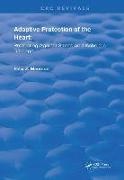Read more
List of contents
Primary Stress Damage of The Heart. The Place of Primary Cardiac Stress Damage in The Pathogenesis of Arrhythmias, Ischemic Disease, And Sudden Cardiac Death. Adaptation to Stress and Its Cardioprotective Effect in Stress, Ischemic, And Reperfusion Damage. Central Stress-Limiting Systems and Cardioprotective Effects of Their Mediators and Activators. Local Stress-Limiting Systems and Their Cardioprotective Effects. The Phenomenon of Adaptive Stabilization of Structures and Heart Protection. Adaptation to Intermittent Hypoxia and Its Use for Protecting The Heart From Stress And Ischemic Damage.
About the author
Felix Z. Meerson
Summary
Published in 1991: This book explores the possibilities of protecting the heart against stress and ischemia through adaptation to intermittent hypoxia or to mild, nondamaging stress exposure. These possibilities are based on studies that show an increase in the potency and efficiency of stress-limiting systems when subjected to repeated stress actions, adaptation to high altitude hypoxia, or adaptation to increased physical loads. Any stress reaction is coupled with an activation of central and local stress-limiting systems, such as GABA-ergic, opioidergic, and serotonergic systems in the brain, as well as antioxidants, prostaglandins, and adenosine in executory organs. The book also presents the use of metabolites of stress-limiting systems rather than adaptation as a means to prevent cardiac arrythmias. It also discusses genetically determined deficiencies of stress-limiting systems and their role in the etiology of stress-induced diseases. Cardiologists and researchers studying stress and its effect on cardiovascular systems will find this book extremely useful.

